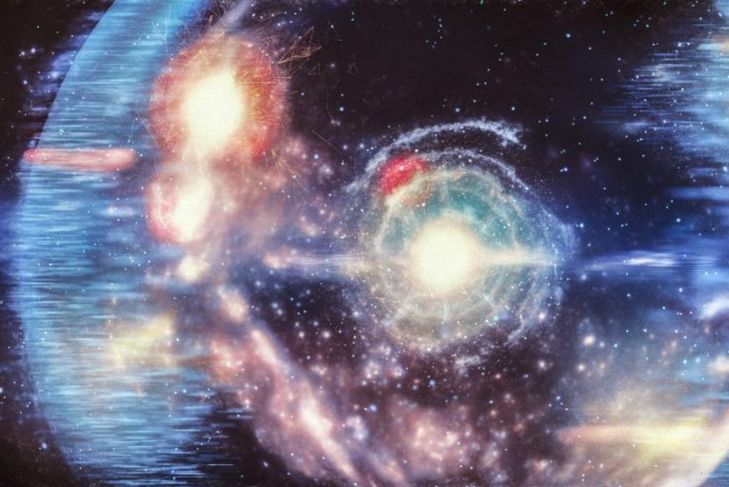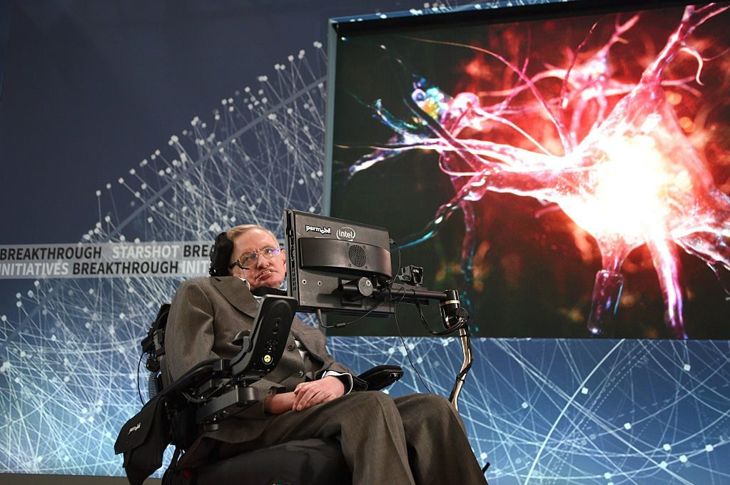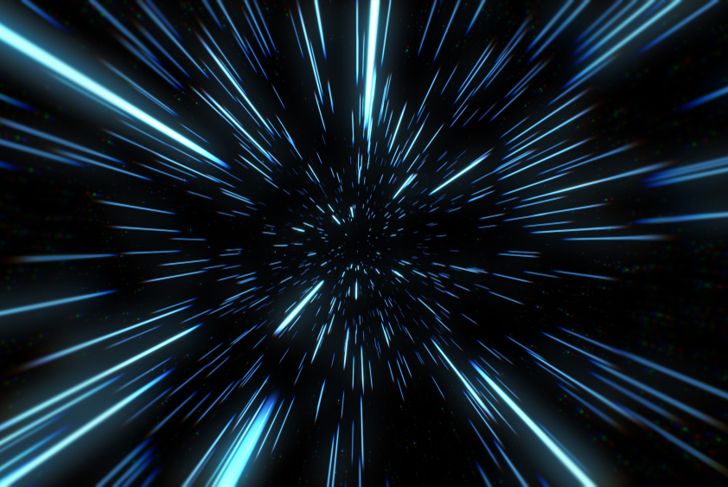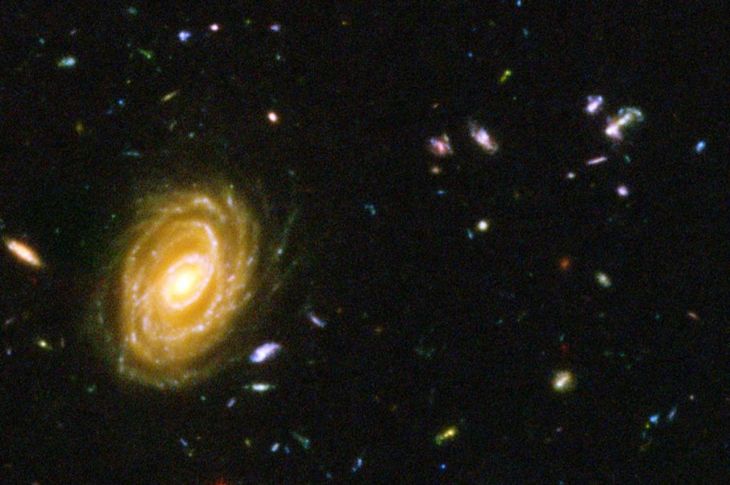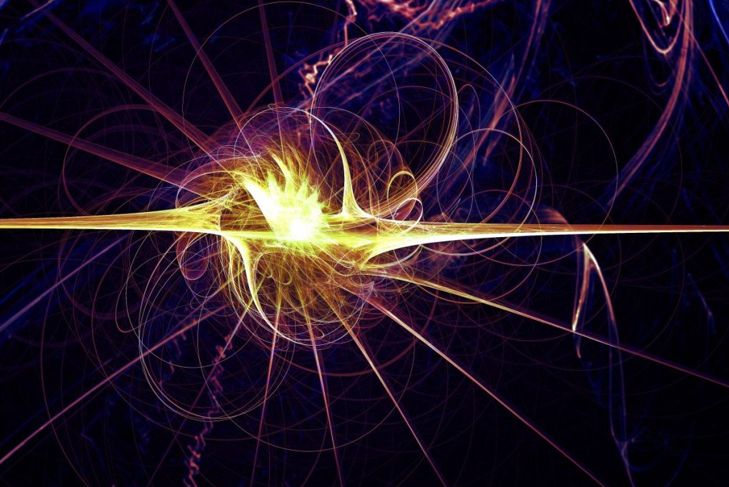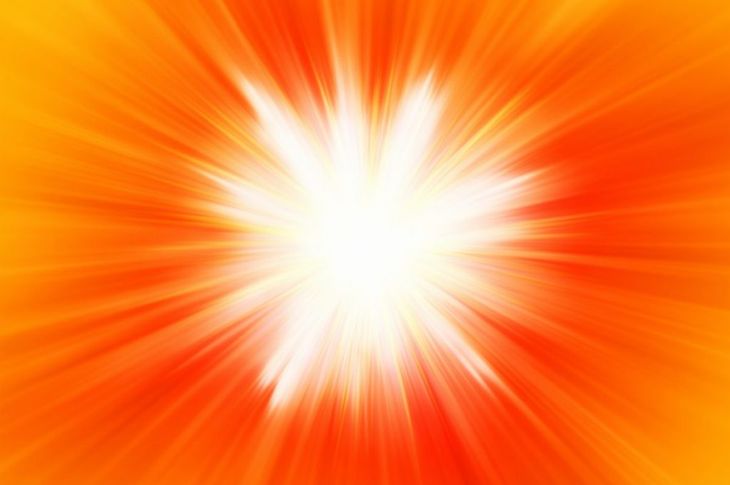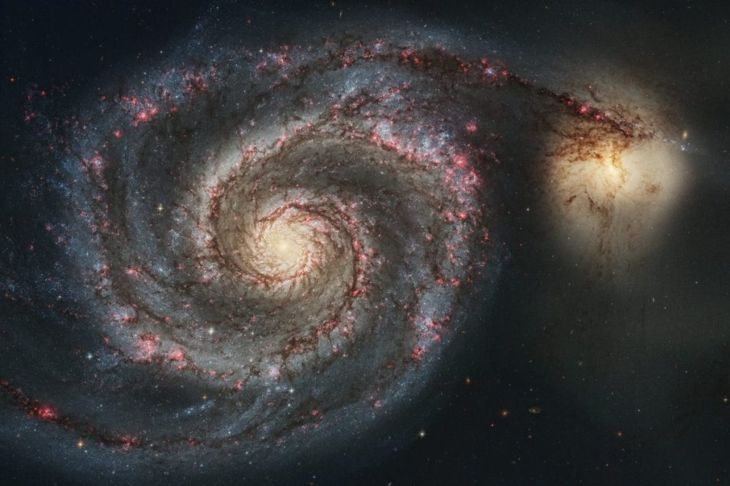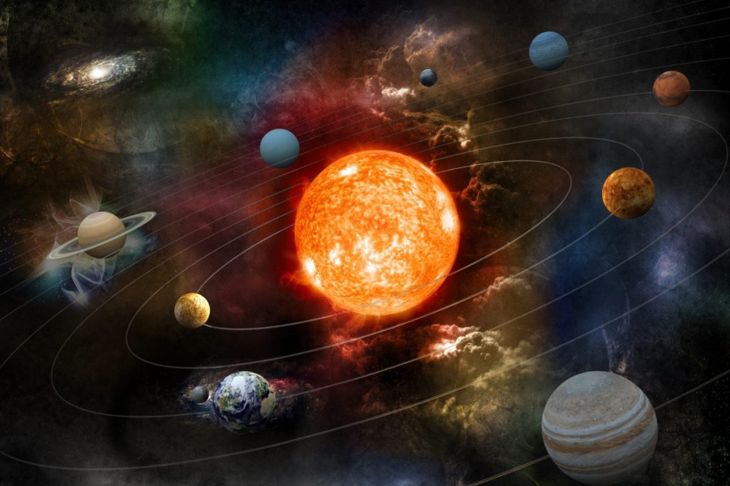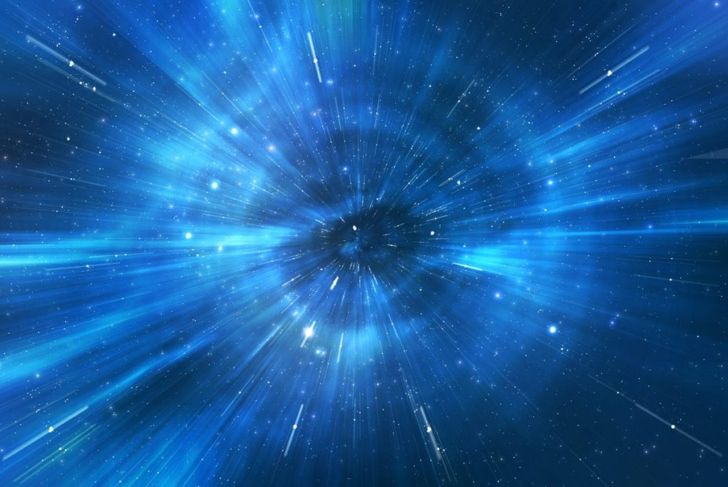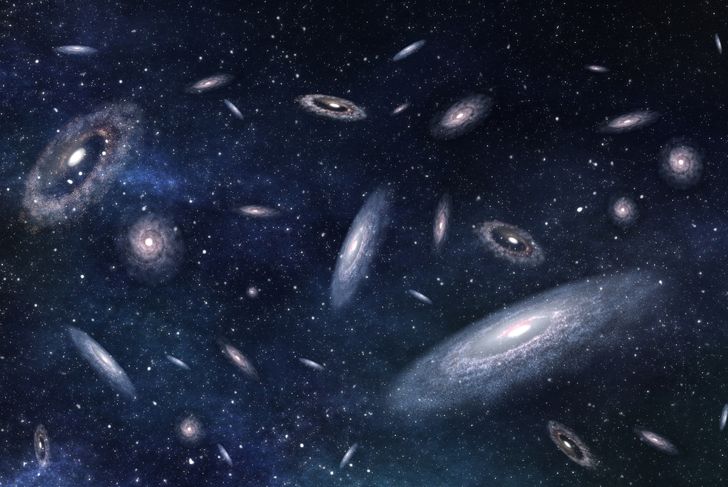Without access to a time machine, we can't head back to witness how the universe began. However, that doesn't mean scientists are clueless. Physicists don't need a time machine – they have math. In fact, with an analog radio set, you too can hear the echos of our universe's beginnings, the expansion theory that we call the Big Bang.
How The Big Bang Got Its Name
Despite the name, the Big Bang was not an explosion. Instead, it was the rapid change of a tiny point of matter into a vast and expanding universe. Before the Big Bang, there was no universe for an explosion to happen in. The Big Bang literally formed space as it happened. The obvious question is what is the universe expanding into? More on that later. The original term for the theory was a primeval or singularity origin and was proposed by Georges Lemaîtrein in 1931. The main opposing idea was called the Steady State Model, supporters of which believed the universe had no beginning but stretched back in time eternally. Physicist Fred Hoyle supported the steady-state model. On March 28th, 1949, Hoyle gave an interview where he disparagingly referred to the singularity origin as "this big bang idea," later calling it irrational. Nevertheless, the name stuck.
Who Worked This Out?
The final Big Bang model was built up by different scientists over decades. Each time physicists worked on their theory they expanded the understanding. After Georges Lemaîtrein published his ideas in 1931, mathematical models were improved by Roger Penrose, Stephen Hawking, and George F. R. Ellis in 1968 and 1970. During the 1970s up to the 1990s, the features of the Big Bang model were characterizing. Then, in 1981 Alan Guth made a breakthrough. He realized there was a time of rapid expansion in the early universe he called inflation. Then, in the 1990s advances in telescope technology allowed physicists to accurate measure the cosmos and find final pieces of evidence for the Big Bang model, and have made the unexpected discovery that the expansion of the universe is accelerating.
Evidence For The Big Bang
There are four pieces of evidence sometimes called "pillars" that prove the Big Bang model. Expansion of the universe.By using powerful telescopes, scientists can see that everything is moving away from us. This does not mean we are at the center of the universe – it means that space itself is expanding. Therefore, we know it was once smaller, and this supports the Big Bang modelCosmic microwavesMicrowaves are a type of radiation. Several studies have proved cosmic microwaves exist in a way that supports the theory that the universe started as a small point of matter and inflated in size. The picture above is an image of the early universe and the cosmic microwaves.
More Evidence for the Big Bang
Nucleosynthesis of elementsWhen the cosmos was new, it was mainly hydrogen, helium, and other light elements. Heavier elements later formed inside stars. Equations based on the Big Bang model predict the amounts of light elements so accurately that scientists see it as proof the theory is correct.Galaxy formationGalaxies are spirals of stars. Our solar system is at the edge of the Milky Way which you can see on clear nights – this is the denser center of our galaxy. By using powerful telescopes, scientists can see so far that they are looking back in time because light takes times to travel. We have photographic evidence that early galaxies looked different, meaning the steady-state model of the universe is wrong.These four pillars of evidence are the most important proof that our universe started as a small and extremely dense point that rapidly expanded.
First Second Of The Big Bang
13.7 billion years ago the universe began. The first moments have scientific names to describe what happened. Each section is very brief. The first was;
- Planck Epoch from zero seconds to 10-43 seconds. This is a shorthand method for showing 0.0000000000000000000000000000000000000000001 seconds. At this moment the universe is a tiny spec of extreme temperature and mass.
- Grand Unification Epoch until 10-36 seconds. Gravity and elementary particles form.
- Inflation Epoch until 10-32 seconds. A rapid expansion where the universe goes from a tiny area smaller than a pinpoint to the size of an apple.
- Electroweak Epoch until 10-12 seconds. Particles like Higgs Boson form.
- Quark Epoch until 10-6 seconds. Quark particles collide and many are destroyed, but one in every 2 billion survive.
- Hadron Epoch until 1 second. The universe cooled to a trillion degrees Celsius. Protons and neutrons form.
Universe Grows And Cools
During the next few stages, the universe continues to expand and cool down. From 1 second to 20 minutes the universe temperature reduces to 1 billion degrees Celcius. The universe cooled because it was growing in size because the particles were getting further away from one another. At this temperature, the protons and neutrons combine forming the first atoms of the light elements. The primary elements are still the most common in the universe today: Hydrogen, helium, and lithium.After 300,000 years the universe was 3,000 degrees. Far hotter than today which is minus 240 degrees. The next era is the Dark Age which lasted for 150 million years. There are no stars, but there are protons. The proton particles make the cosmic radiation scientists can see today. If you tune a radio to a frequency without a station, about 1% of the static you hear is this radiation.
Formation of Stars and Galaxies
Until 300 million years after the cosmos formed there was no light because there were no stars. Stars formed from 300 million to 500 million years after the Big Bang, and continue to form up to today. Before stars, the cosmos was a mixture of hydrogen and other light gases. The atoms were not evenly spread out. Slowly over time gravity pulled atoms closer to one another. Once there was a high enough concentration of hydrogen, the heat of the closely packed hydrogen started nuclear fusion which made stars. The stars pulled towards each other by gravity and made simple galaxies with an oval shape.The first stars were 100 times larger than our sun and did not last long. When they exploded as supernova heavier elements including carbon was created. This made denser clouds of matter. The matter was affected by gravity, causing it to move and spin.
Planets And Solar Systems Form
By eight and a half billion years after the Big Bang, there was enough matter and heavier elements to make planets. Just like the formation of stars gravity pulled atoms of heavier elements together until the heat created by the density of particles started nuclear reactions. Rather than making light by burning hydrogen, the heavier elements joined and made rocky planets and gas giant planets. All planets formed around a star, and the force of gravity causes the planets spin and orbit the star.
The Universe Is Still Expanding
Although the expansion of the universe was much faster soon after the Big Bang, it continues to expand today. Scientists once thought the universe would collapse in on itself, possibly starting a new Big Bang in a repeating cycle of universe creation. But now physicists have proved this will not happen. Instead, the universe will continually expand forever. In the far distant future, the universe will have expanded so much that each atom will be too far apart from others for gravity to affect them. When this occurs, no new stars or planets will be able to form, and the universe will go cold and dark.
What Science Doesn't Know Yet
Although scientists have a detailed understanding of the first moments and evolution of our universe, there are still areas of uncertainty. One of the biggest mysteries is what formed the singularity which led into the Big Bang. Another is what existed before the formation of the universe. These questions may be unanswerable, but there are many theories proposed by theoretical physicists. A common theory is that there are multiple universes, each with slightly different laws of physics. Perhaps with further research and study, we will discover the answers to these mysteries.

 Home
Home Health
Health Diet & Nutrition
Diet & Nutrition Living Well
Living Well More
More